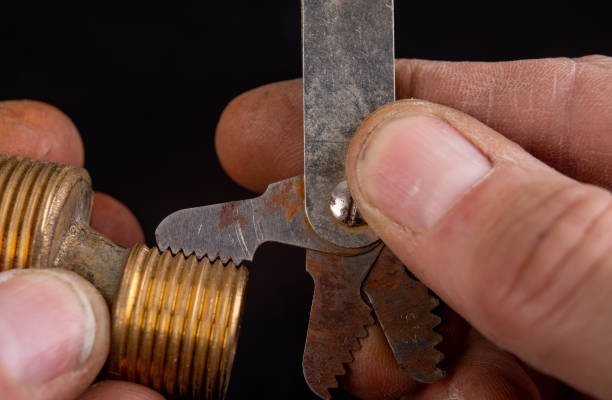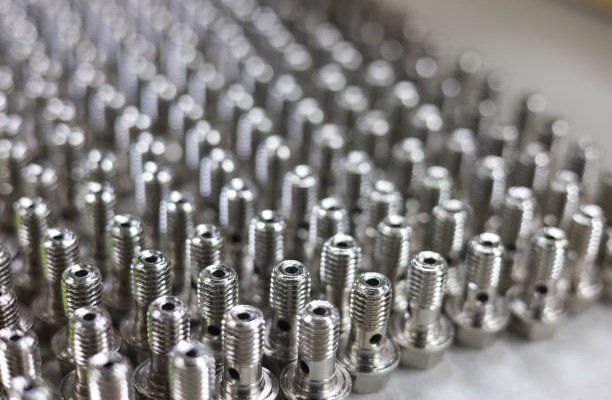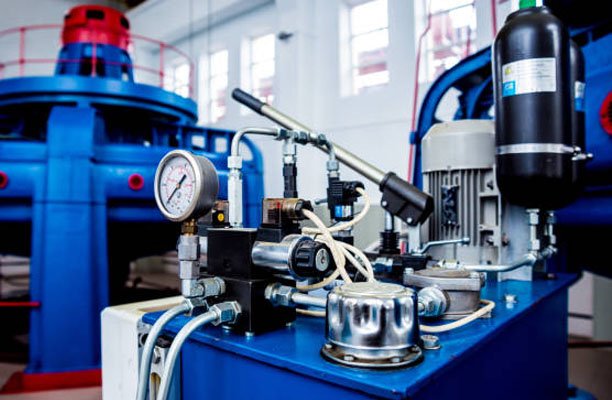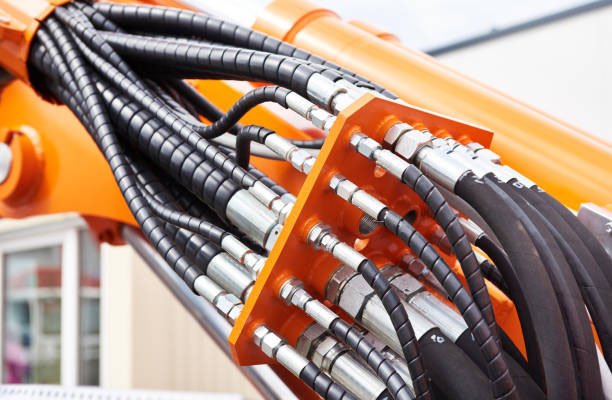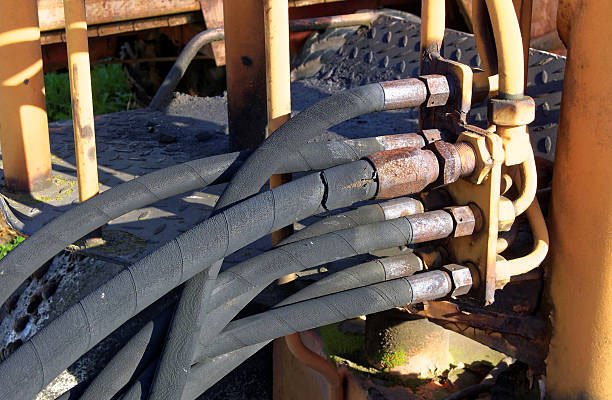Hydraulic systems are integral to industries such as manufacturing, automotive, construction, and more, where precision in assembly and maintenance is crucial. One of the most common challenges faced by engineers and maintenance professionals is identifying hydraulic thread types correctly. Choosing the wrong thread can lead to leaks, equipment damage, and potential safety hazards. Consequently, this guide provides an in-depth look at the process of identifying hydraulic threads, designed to enhance your understanding and prevent costly mistakes.
Types of Hydraulic Fittings
Hydraulic fittings come in various forms, each designed for specific applications and system requirements. The primary types include:
- Threaded Fittings:
These are the most commonly used fittings. They rely on screw threads to create a tight, secure connection. Threaded fittings are available in different standards, such as BSP, NPT, and JIC. - Flange Fittings:
Designers create flange fittings for high-pressure systems and secure them using bolts. These fittings are often used in heavy-duty applications, such as in construction and industrial equipment. - Push-to-Connect Fittings:
These fittings simplify installation by eliminating the need for threading or tools. They are ideal for systems requiring quick and frequent disassembly. - Compression Fittings:
Compression fittings create a seal by compressing a ferrule against the fitting body. They are commonly used in plumbing and low-pressure hydraulic systems.
Why Thread Identification Matters
Importance of Accurate Identification
Thread identification is essential for ensuring that hydraulic components are compatible and fit together correctly. Consequently, incompatible threads can lead to several problems, including:
- System Inefficiency: Improper connections can cause pressure drops and reduced fluid flow, impacting the performance of the hydraulic system.
- Leaks: A poor seal between fittings can result in fluid leakage, which poses safety risks and increases maintenance costs.
- Safety Hazards: High-pressure hydraulic fluid leaks can cause injuries or damage to surrounding equipment.
Risks of Mismatched Threads
- Cross-Threading: When incompatible threads are forced together, they can damage the fitting, making it unusable.
- Premature Wear: Mismatched threads may not form a proper seal, leading to excessive wear and tear over time.
- System Failures: In critical applications, thread mismatches can cause catastrophic failures, resulting in costly downtime or accidents.
Thread Standards in Hydraulic Fittings
Metric Threads
Most European and Asian countries use metric threads, measured in millimeters, as the standard. These threads, often used in automotive and industrial hydraulic systems, are identified by their pitch (distance between threads) and diameter.
Imperial Threads
Manufacturers in North America widely use imperial threads, measured in inches, especially in equipment made in the United States and Canada. They often identify imperial threads by threads per inch (TPI).
Common Standards
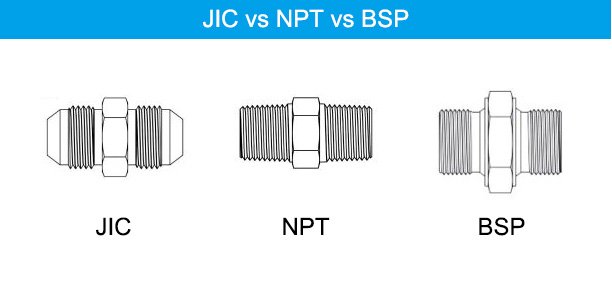
- BSP (British Standard Pipe):
BSP threads are popular in Europe, Asia, and Australia. They are available in two types: BSPP (parallel) and BSPT (tapered). - NPT (National Pipe Tapered):
NPT threads are widely used in North America and are characterized by their conical shape, which provides a seal through thread deformation. - JIC (Joint Industry Council):
JIC threads feature a 37-degree flare for reliable sealing. Fluid power applications, such as agricultural and construction equipment, commonly use them. - ORFS (O-Ring Face Seal):
ORFS fittings use an O-ring for sealing, making them ideal for high-pressure systems and applications where leak prevention is critical.
Tools for Thread Identification
Thread Gauges
Thread gauges are precision tools used to measure the pitch and angle of threads. They come in various sizes and standards, allowing technicians to identify both metric and imperial threads.
Calipers
Calipers are versatile measuring tools used to determine the external and internal diameters of threads. Additionally, digital calipers provide accurate readings and are easy to use in tight spaces.
Identification Charts
Identification charts are essential references that match measured values (diameter, pitch, and TPI) to specific thread standards. These charts are widely available online or from fitting manufacturers.
Steps to Identify Hydraulic Hose Fitting Threads
Step 1: Determine Thread Shape
Objective: Identify if the thread is tapered or parallel.
Understanding Thread Shapes: Threads can be broadly categorized into two shapes: tapered and parallel. Tapered threads become narrower as they extend outward from the fitting, creating a cone-shaped seal. They are typically used in applications where a tight seal is crucial and often do not require additional sealing methods. Conversely, parallel threads maintain the same diameter along their length and usually require sealing materials to ensure a leak-proof connection. Parallel threads, on the other hand, maintain the same diameter throughout and usually require a mechanical or a gasket seal to prevent leaks.
Visual Inspection Techniques: Begin by visually inspecting the fitting. A tapered thread will visibly narrow down towards the end, while a parallel thread will appear the same throughout its length. This can sometimes be determined at a glance, especially if you’re familiar with the parts.
Using Calipers for Confirmation: For a more accurate identification, use calipers to measure the diameter at different points of the thread. If the diameter remains consistent, it’s a parallel thread. Conversely, if it tapers, it’s a tapered thread. This method ensures that you accurately determine the thread type, preventing mismatch and potential equipment issues.
Case Studies: Consider the case of an automotive repair shop that misidentified a thread type, leading to improper fitting and oil leakage. Subsequently, by implementing a rigorous inspection process, the shop reduced mechanical failures by 25%.
Step 2: Measure the Thread Pitch
Objective: Establish the number of threads per inch or the millimeter gap between threads.
The Importance of Pitch: Thread pitch can significantly affect the compatibility and functionality of threaded connections. Incorrect pitch measurements can lead to cross-threading, which damages both the male and female threads and results in a poor seal.
Detailed Use of Pitch Gauges: To measure the pitch accurately, place a pitch gauge on the threads. The gauge that matches perfectly without any gap indicates the correct pitch. Furthermore, always check several gauges to ensure accuracy, as some pitches are very close in size.
Real-World Examples: In a hydraulic power plant, correct identification of thread pitch was crucial when ordering custom-made adapters to avoid pressure leaks in high-stress environments.
Step 3: Determine the Thread Size
Objective: Accurately measure the thread diameter.
Size Measurement Methods: If the thread is a pipe thread (like NPT or BSPP), measure the outside diameter and refer to a standard chart to determine its nominal size. Additionally, for non-pipe threads, use a caliper to directly measure the major diameter.
Tips and Tricks for Accurate Measurement: Always clean the threads before measuring to remove any debris that might skew the results. For difficult-to-measure threads, applying a thin layer of coloring (like machinist’s blue) can help in highlighting the thread edges for more precise measurement.
Common Mistakes: One common mistake is using a worn-out caliper, which can give inaccurate readings. Always ensure your tools are well-maintained and calibrated.
Step 4: Designate the Thread
Objective: Use standardized formats to describe the thread.
Standardizing Thread Designation: Once you identify the threads, you should designate them in a standard format, such as “M10 x 1” for metric or “1/4-18 NPT” for American pipe threads. This helps maintain consistency in documentation and ordering.
Examples of Designation Formats: You would note a ¾ inch UN/UNF thread as 3/4-16 UN/UNF. Accurate designation is crucial in global industries to ensure that different regions correctly order and supply parts.
How to Differentiate Thread Types
Tapered vs. Parallel Threads
- Tapered Threads: These threads have a conical shape and become narrower toward the end. They rely on thread deformation to create a seal and are common in NPT and BSPT fittings.
- Parallel Threads: These threads maintain a consistent diameter along their length. They use gaskets or O-rings for sealing and are typical in BSPP and ORFS fittings.
Male vs. Female Threads
Understanding the difference between male and female threads is also vital:
- Male Threads: External threads that fit into female counterparts.
- Female Threads: Internal threads that receive male threads.
Common Thread Standards Explained
BSP (British Standard Pipe)
BSP threads are widely used in Europe and Asia. They are available in two main types:
- BSPP (British Standard Pipe Parallel):
These threads have a constant diameter and rely on a gasket or washer for sealing. - BSPT (British Standard Pipe Tapered):
BSPT threads have a conical shape, creating a seal through thread deformation.
NPT (National Pipe Tapered)
NPT threads are the standard for hydraulic systems in North America. They are tapered to form a secure, leak-proof connection without the need for additional sealing materials.
JIC (Joint Industry Council)
JIC threads feature a 37-degree flare at the fitting end. This design provides a metal-to-metal seal, making it highly reliable for high-pressure applications.
ORFS (O-Ring Face Seal)
ORFS fittings are designed with a flat face and an embedded O-ring, ensuring a robust seal against leaks. They are commonly used in industries requiring high-pressure and vibration-resistant connections.
Conclusion
Accurately identifying threads on hydraulic hose fittings is essential for maintaining system efficiency and safety. Moreover, with the right tools, knowledge of thread standards, and attention to detail, you can ensure proper compatibility and prevent costly issues. Understanding threads not only saves time but also enhances the reliability of hydraulic systems, making it a valuable skill for professionals across industries.

